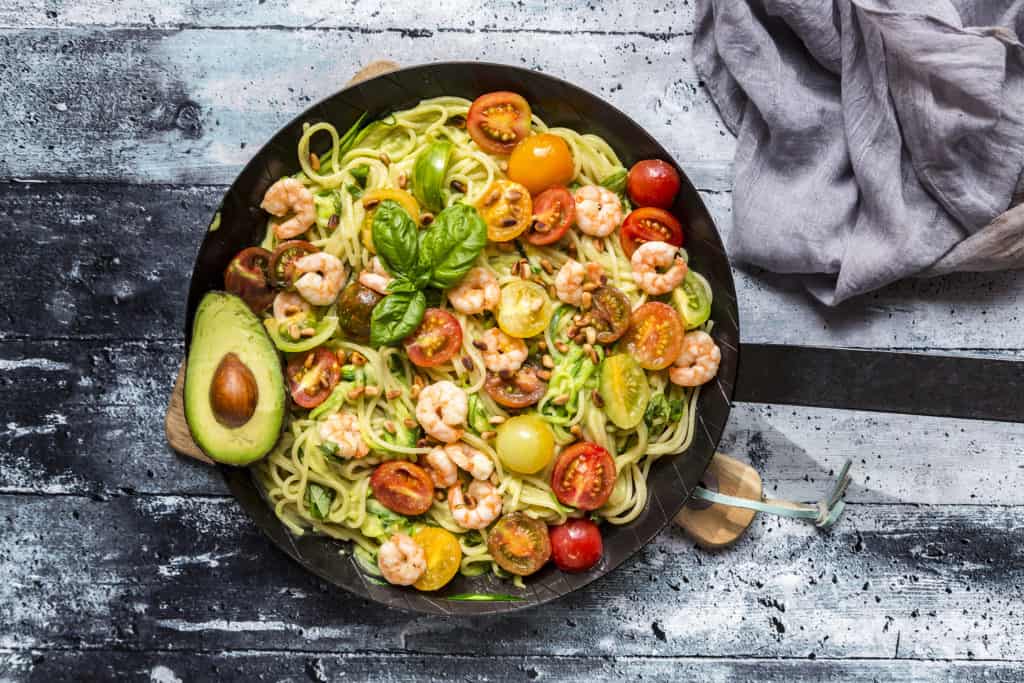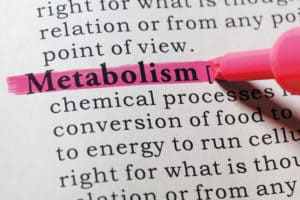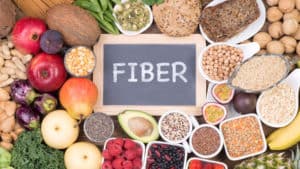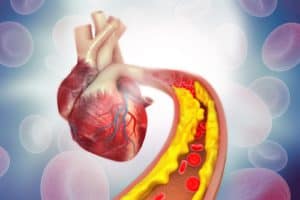If you’re one of the millions of people who vow to begin a new eating regime on, the potential weight-loss plans are endless. And as you scroll through your Instagram feed, you’ll likely see people touting the “amazing” diet that has shrunk their waistlines, boosted their stamina, and taken years off their appearance.
Two of the trendy diets over the last couple of years include keto and paleo. But before you select your 2023 menus, here’s what you need to know about these somewhat similar plans. When it comes to paleo vs. keto, you may be wondering which one will help you lose the most weight while staying healthy.
Paleo (short for the “paleolithic era”) mimics the diet of early humans, and it has much in common with a whole foods ketogenic diet. Both diets embrace vegetables, healthy fats, meat, and fish, and both forbid legumes, seed oils, refined sugar, and processed food.
Both paleo and keto are compatible with good health, but they aren’t the same diet. They don’t have the same health effects or requirements. Depending on how you practice each one, they could have dramatically different outcomes when it comes to healthy weight loss.
This article looks at the similarities and differences between the keto and paleo diets, including their benefits, food lists, and side effects.
What Is the Paleo Diet?
The paleo or paleolithic diet hinges on a single principle: eat like your ancestors. This doesn’t mean eating like your great grandparents it means eating more like cavemen, in a hunter-gatherer sort of way.
The paleo diet is meant to resemble the supposed diet of our long-ago, hunter-gatherer ancestors. The idea behind it is that our Western pattern of eating is contributing to the rise of chronic illness and obesity.
These early humans evolved to flourish on certain foods: meat, fish, animal fat, wild berries, tubers, etc. Paleo advocates believe that consuming these evolutionarily-preferred foods promotes optimal health.
These foods are the main staples of paleo, which is sometimes called the caveman diet it’s a pre-agriculture approach to eating no grains, no beans, and nothing farmed or grown on purpose. That’s paleo in a nutshell.
Paleo Diet Foods
There are many versions of the paleo diet, but below are the general guidelines.
On a paleo meal plan, your food choices include:
- Pastured or grass-fed meat, fish, eggs, and organ meats
- Fresh fruits and veggies (as much as you like, especially leafy greens)
- Healthy fats like coconut oil, olive oil, avocados (and avocado oil), butter, ghee, and palm oil
- Nuts (all kinds)
- Starchy roots and tubers (sweet potatoes, cassava, sunchokes, rutabaga, etc.)
- Naturally derived sweets like honey, maple syrup, and coconut sugar (these are technically allowed, but many trying to lose weight leave them out or use them sparingly)
On paleo, foods to avoid include:
- Industrial vegetable oils like soybean oil, safflower oil, and canola oil
- Legumes
- Dairy
- Refined sugar
- Grains (including whole grains)
- Anything processed
Because paleo bans grains, sugar, and beans, this diet is often low-carb. However, low-carb is the trend, not the rule of paleo. Since vegetables (including starchy veggies) are allowed, paleo ranges from low- to high-carb, and everywhere in between.
You might be wondering, why are legumes and dairy prohibited on paleo. Aren’t those ancestral foods? It depends on who you ask. Legumes, for instance, contain high levels of anti-nutrients that damage the gut and inhibit nutrient absorption from food
Ancient cultures, however, would sprout and soak legumes before serving them, removing most of the harmful compounds in the process. The same goes for whole grains. The paleo argument against dairy is less clear. The claim is that hunter-gatherers didn’t drink milk, so neither should you.
But here’s the thing. Many people, especially those of Northern European descent, have evolved to tolerate dairy. These people have more lactase, a special enzyme that digests milk sugar. Not all paleo sources shirk dairy, though.
For those who can tolerate it, dairy has healthy nutrients and is not necessarily counter to human evolution. For better or worse, a strict paleo diet means eating exactly like ancient homo sapiens ate, which can be challenging at a modern-day supermarket or restaurant.
Paleo Diet Chart
| BREAKFAST | LUNCH | DINNER | |
| MONDAY | Olive Oil Fried Eggs And Vegetables & One Piece Of Fruit | Chicken Salad With Olive Oil & A Handful Of Nuts | Burgers (No Bun) Fried In Butter With Vegetables & Salsa |
| TUESDAY | Bacon, Eggs & One Piece Of Fruit | Leftover Burgers From The Night Before | Salmon Fried In Butter & Vegetables |
| WEDNESDAY | Salmon & Vegetables | Sandwich In A Lettuce Leaf With Meat And Fresh Vegetables | Ground Beef Stir-Fry With Vegetables & Berries |
| THURSDAY | Eggs & One Piece Of Fruit | Stir-Fry & Handful Of Nuts | Fried Pork & Vegetables |
| FRIDAY | Eggs & Vegetables Fried In Olive Oil | Chicken Salad With Olive Oil & A Handful Of Nuts | Steak, Vegetables & Sweet Potatoes |
| SATURDAY | Bacon, Eggs & One Piece Of Fruit | Steak & Vegetables | Baked Salmon, Vegetables & Avocado |
| SUNDAY | Salmon & Vegetables | Sandwich In Lettuce Leaf With Meat & Fresh Vegetables | Grilled Chicken Wings, Vegetables & Salsa |
What Is the Ketogenic Diet?
Like the paleo diet, the ketogenic diet leaves out sugar, grains, legumes, and industrial seed oils. Unlike paleo, the goal of keto is to promote a unique metabolic state called ketosis. When you eat a very low-carb, high-fat diet like keto, your blood sugar and insulin levels stay low.
This tells your body that carbs are scarce, so it’s time to burn fat and make ketones. Ketones are special molecules, made in your liver, that can easily, cleanly, and efficiently convert to energy or ATP. This energy goes on to power every cell in your body, including your neurons.
Once you’re fat-adapted after four to six weeks of the keto diet plan you start burning your fat stores instead of glucose to power your body. This can lead to fat loss, reduced cravings, lower inflammation, clearer cognition, and more stable energy.
These health benefits have made the keto diet extremely popular, but it’s not how keto got started.
How Does Keto Diet Plan Work?
A keto diet is an eating plan that focuses on eating lots of healthy fat, some protein, and minimal carbohydrates.
The body typically uses carbohydrates as fuel for energy. When a person does not get enough carbs, the body will start using up fat and some protein stores. In true ketosis, the liver will take stored fat and turn it into ketones, which the body then uses for energy.
Reaching this state of ketosis is the goal of the keto diet. Some believe ketosis is an efficient way to lose excess fat and to reduce the risk of problems, such as heart disease and diabetes.
In general, a person on a keto diet should consume:
- 70–80% fat
- 20–25% protein
- 5–10% carbohydrates
The keto diet encourages and excludes specific foods. A person on keto cannot get carbohydrates from grains or legumes. Their carbs must come from a keto-friendly vegetable, such as leafy greens, or a small group of fruits, primarily berries.
Keto Diet Foods
There are many versions of the keto diet, but below are the general guidelines.
On a keto meal plan, your food choices include:
- Fish (salmon, oysters, scallops)
- Meat and poultry (pork, lamb, steak, and yes, bacon!)
- Eggs
- Nuts
- Non-starchy vegetables (spinach, broccoli, cauliflower, tomatoes)
- Fats and oils (butter, mayo, avocado oil, ghee)
- High-fat dairy (full-fat yogurt, heavy cream, cream cheese, hard and soft cheese)
- Berries and artificial sweeteners can be eaten sparingly.
On keto, foods to avoid include:
- Most fruits (apples, bananas, peaches, oranges)
- Grains (bread, pasta, cereals, and any foods made with wheat, rice, oats, or corn)
- Legumes (all beans)
- Anything with added sugar (desserts, honey, cane sugar)
- Root veggies (potatoes, carrots, turnips)
- Alcohol
- Sweetened beverages (juice, soda)
- Sweetened sauces and dips (ketchup, BBQ sauce, some salad dressings)
- Some oils (canola, soybean, peanut)
Paleo vs. Keto: Which Diet Is Better for Weight Loss?
If your goal is weight loss, you probably want to know if paleo or keto is the way to go. It’s not a super-complicated question. The science should answer the debate on paleo vs. keto for you.
Keto For Weight Loss
The keto diet is all about calculating your macronutrient ratios. On keto, you eat high-fat, moderate protein, and low-carb calories. The main benefit of keto is metabolic. Fewer carbs, lower blood sugar, contained insulin, more fat burned, more weight loss. Pretty straightforward.
In addition to the metabolic benefit, the state of ketosis also affects hormones relevant to weight loss. For instance, a keto diet has been shown to lower circulating levels of ghrelin your hunger hormone. Less ghrelin, fewer cravings.
Keto is like killing two birds with one stone for weight loss: You burn more fat, and you crave less food.
Paleo for Weight Loss
Unfortunately, the research on paleo for weight loss is a bit thin. The evidence is more theoretical or anecdotal, and you don’t have stacks of science as with keto showing significant weight loss in controlled clinical settings.
Nonetheless, many folks have reported successful weight loss on the paleo diet. Here are some potential reasons why that’s the case.
Calorie Restriction
Some researchers believe people lose weight on the paleo diet, not because ancestral dieting has special metabolic effects, but because people end up eating fewer calories on paleo.
This is also true of intermittent fasting (IF). IF means eating within a four- to 12-hour window every day, and not eating (fasting) for the remaining hours. IF could also mean doing 24-hour fasts every other day, once a week, or once a month.
Many paleo folks practice intermittent fasting, which could explain the total decrease in calories on the paleo diet. Less food in, less weight gain.
Metabolic Benefits
Several studies have shown that a paleo diet improves blood sugar and cardiovascular risk factors in those with type 2 diabetes. Researchers suspect it’s the high-protein intake on paleo that may improve obese or diabetic metabolisms.
But when you look at the bulk of the science, it’s not high-protein diets per se, but very low-carb, ketogenic diets that have proven most effective for treating and reversing type 2 diabetes. There’s no shortage of high-quality controlled trials supporting this point.
It makes you wonder: Since paleo diets are often low-carb, could this explain weight loss on paleo?
Paleo and Low-Carb
Since the paleo diet prohibits grains and sugars, many paleo folks find themselves slipping into low-carb dieting. Tubers, roots, and other starchy vegetables are allowed, but it’s harder to carb-binge on carrots than on, say, pasta. Also, removing processed foods from the paleo diet helps keep carbs low.
Low-carb eating can be an effective strategy to reduce body fat. But there’s nuance here. It’s possible to be low-carb, but not low-carb enough to reach a state of ketosis. In this case, your body will be in sugar-burn mode, but there won’t be much sugar to burn.
This can be a problem. For instance, in the absence of ketones, your brain needs about 130 grams of sugar per day to function. So, if you’re eating 75 grams of carbs per day on paleo that’s too high to get into ketosis, but perhaps too low to fuel your brain. This could cause brain fog, headaches, and cravings.
Depending on the situation, low-carb paleo diets may help with weight loss, but low-carb diets (that aren’t keto) may come with unwanted side effects.
Paleo vs. Keto: Which Diet Is Easier to Maintain?
When it comes to paleo vs. keto, much of it depends on the dieter.
Dairy lovers will do better on the keto diet. Dairy fat was used to fuel the original ketogenic diet, and it offers healthy nutrients. But for reasons that have little to do with science, dairy is typically forbidden on paleo.
Fruit and potato fans, on the other hand, may prefer paleo. These foods have too many carbs for a standard keto diet, but they’re fine by paleo standards.
If you want to tighten the screws on your diet, you can combine paleo and keto. That means no fruits, no starchy veggies, no dairy, no grains, and of course, nothing refined. Maybe keep grass-fed or pasture-raised dairy products around if you can tolerate them.
There’s not much literature on the combined paleo-keto diet, but it has been shown, in a single case study, to treat childhood epilepsy successfully.
The verdict: Both paleo and keto have restrictions, so compliance depends on your tastes, goals, and personality.
The Bottom Line
Both the keto and paleo diets have specific guidelines that include and exclude certain types of food. There are some similarities but plenty of variation between the diets. Also, both may have health benefits related to eliminating highly processed foods, which may help with weight loss.
Both registered dieticians find downsides with paleo plans as compared to keto and feel that eliminating foods that contain essential nutrients all in the name of weight loss does not equate to a healthy diet.
Whereas the keto diet is still very promising not eliminating any food groups but just optimizing. To make real, long-term changes, we can’t rely on restriction. We have to approach health and weight loss with an understanding of our own lifestyle and shift toward healthier eating habits through behavior changes that last a lifetime for which Keto stands way above Paleo.
Since eating preferences and dietary needs vary from person to person, it’s advised to check with your doctor before starting any new weight-loss program.
All your excuses end right here, stop waiting and get started, this is as easy as it gets! Check out our transformation stories, health content, and recipes! Follow us on Instagram for the daily dose of the Keto Lifestyle!









